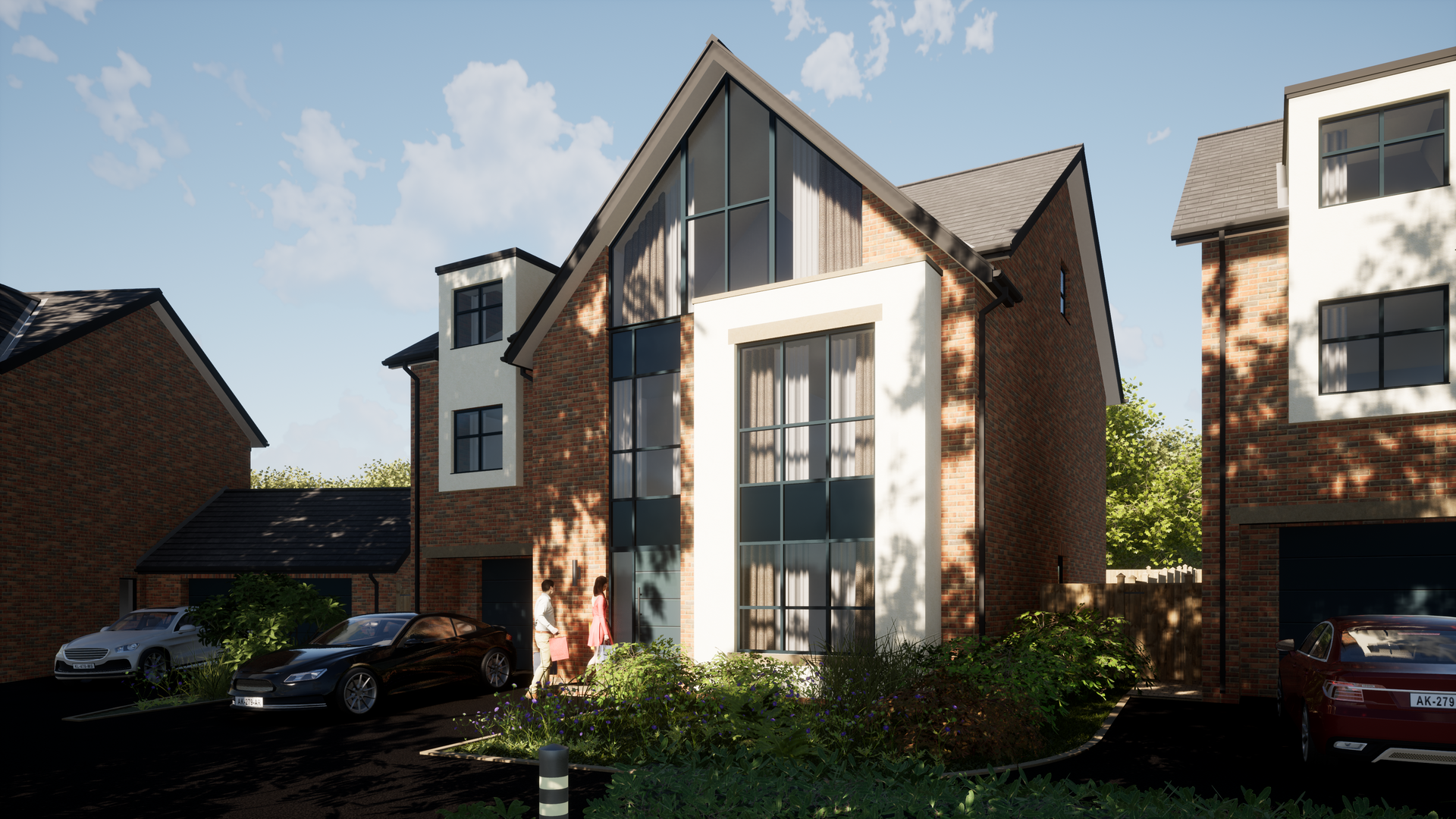Tree Survey for Architects
Our Compliant BS5837 development site tree surveys, plans, and reports offer a thorough assessment for submission with any planning application. We support teams in achieving successful schemes, including architects, developers, and planners.
We recognize that every site is unique and that there are rarely 'one-size-fits-all' solutions. Therefore, we work collaboratively with our clients to provide appropriate, effective, and cost-efficient solutions tailored to their specific needs.
By partnering with us, you can ensure that your development projects are not only compliant but also optimized for success. Let's work together to create sustainable and well-planned landscapes.
Free Consultation
Fill in the from below and we'll be in touch to discuss your tree-related project or issue.
Contact Us
We will get back to you as soon as possible.
Please try again later.
Tree Surveys for Developers and Planners
When it comes to planning applications involving trees, our services are closely aligned with the RIBA stages (Royal Institute of British Architects). This seamless integration allows us to work effectively with your design team or architect.
Trees are an important factor in the UK planning system and necessitate thorough evaluation during the planning application process. Our services cater to our clients' needs, ensuring a well-informed process backed by extensive experience in both public and private sectors. We recognize the importance of balancing environmental sustainability with the economic feasibility of development. We take pride in providing commercially viable arboricultural advice that meets planning policy demands, thereby contributing positively to the success of planning and development projects.
The four key phases of tree surveys for planning applications are:
Pre-Planning
Topographical, tree constraints surveys and inspections allow you to understand what will affect your planning application and be required by the local planning authority. It enables you to budget accurately and manage seasonal surveys effectively.
Planning application
Whether these be arboricultural impact assessment or detailed ecological impact assessment to enable the Local Planning Authority to make a positive decision on your application. The reports explain the situation, and outline any obstacles and actions that need taking into account. We will work with you and your architect to ensure planning permission is achieved.
Post-planning
The Arboricultural Method Statement, Tree Protection Plan go into further detail, describing how construction can go ahead without damaging the natural environment to discharge planning conditions. These documents cover all aspects of the project, such as a schedule of works and how the work will be carried out.
Site implementation
We will be with you every step of the way to ensure that your construction team is fully aware of the technical nature of your project. This ensures that you will not cause physical harm or damage to either site trees or ecology and that all construction processes agreed through planning conditions are adhered to. This ultimately ensures the plans on paper are delivered in reality on the ground.
A BS5837 Tree Survey is necessary because Local Planning Authorities are legally obligated to assess the impact of planning applications on trees. The BS5837 standard outlines the process for considering trees in planning, detailing the collection of information on trees to inform the planning process. Rarely is an application validated without this data.
An Arboricultural Impact Report is required by the Local Planning Authority to evaluate how the proposed site design has considered the impact on trees. This report is integral to the planning policy concerning green infrastructure, including trees, and influences the Authority's decision-making. It is a critical component of the design phase, ensuring that any impact on trees is either avoided or minimized, thereby supporting a strong planning case in line with national and local policies to obtain planning consent.
Our team utilizes digital software to gather tree data, which we then convert into various data exchange formats to facilitate collaboration and communication with our clients and other professionals.
Navigating Tree Preservation Orders & Conservation areas?
Tree Preservation Orders (TPOs) and Conservation Areas significant considerations stage of any development. These designations can profoundly impact your, restricting actions that. Understanding and navigating these restrictions is crucial, a detailed and approach to tree surveys, Urban Tree Management excels in this area, advice and solutions to navigate the TPO and other regulatory hurdles. Our goal is to ensure your project progresses smoothly, without unexpected legal entanglements or delays.
Compensation planting pertains situations where existing trees need to be removed for development purposes, and the local authority mandates the developer to replace them with new trees. Due to the variability in compensation planting policies and requirements from one authority to another our knowledge, expertise, and experience with current systems enable us to accurately calculate the number and size of trees needed meet the authority’s and determine the optimal timing for replacement.
We utilize both Tree Replacement Systems, which calculate the number of replacement trees, and valuation systems such as CAVAT (Capital Asset Value for Amenity Trees), which assign a financial value to trees. These systems have a proven track record of achieving equitable settlements where replacement systems have been used to calculate compensation.
Our vast experience in successfully modeling the replacement value of removed trees over time allows to reach fair and practical agreements for mitigation planting. We support this with expert planting advice and design. Our innovative methods for sustainable and practical tree replacement have been developed to align with the objectives of both developers and local authorities.
NHBC Tree Surveys
To minimize risk, foundations are designed following the National House Building Council's guidance, considering existing vegetation or that which has been removed or significantly trimmed.
A tree survey adhering to NHBC Chapter 4.2 guidelines gathers data on tree species and height and composition of the soil, providing structural engineers with enough information to determine the necessary foundation depth and ensure the construction meets standards.
We conduct these surveys, and produce CAD plans which display the tree cover locations, species, water demand, and potential influence zones, ensuring the information is conveyed clearly and understandably.
How to Integrate Biodiversity Net Gain with Landscape Planning for Architects and Planners
Biodiversity Net Gain (BNG) is now a legal requirement under the Environment Act 2021. It mandates that developments must leave the natural environment in a better state than before. This means achieving a measurable improvement in biodiversity, with local planning authorities expecting a minimum 10% net gain.
BNG Exemptions
Incorporation into the planning process has intertwined biodiversity gain requirements with conservation covenants, local lists, plans, national validation requirements, nationally significant infrastructure projects, protected species, Sites of Special Scientific Interest (SSSI), statutory protected sites, and other relevant policies under the UK government's legal framework
Trusted by architects, developers, planning consultants and local authorities throughout the North West
For expert guidance on site tree surveys, soil assessments, or tree planting plans and schemes, we provide comprehensive services to architects and planning consultants.
Please complete our online form to provide us with essential project details and receive a complimentary quote that encompasses all the necessary information.

Urban Tree Management operate throughout the Greater Manchester, Lancashire, Cheshire, Merseyside and Nationally for tree-related projects of all sizes.
Popular Tree Surveys
Arboricultural Impact Assessment
Arboricultural Method Statement
Tree inspection & Risk Assessment

Contact Us
We will get back to you as soon as possible
Please try again later

















